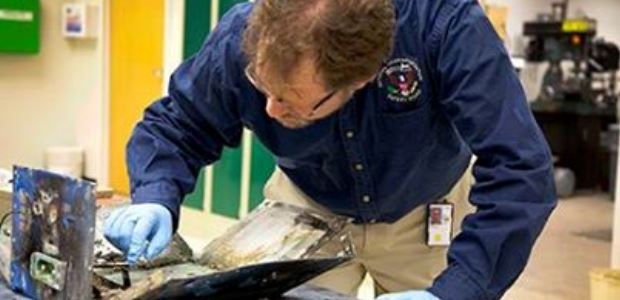
NTSB Warns B787 Battery Certification Deficient
The agency's recommendations stem from its investigation of the Jan. 7, 2013, fire in a lithium-ion battery on a Boeing 787 that was parked at Boston Logan Airport.
The National Transportation Safety Board issued five safety recommendations May 22 to the FAA that are related to the evaluation and certification of lithium-ion batteries for use in aircraft systems and for the certification of new technology.
The recommendations stem from NTSB's ongoing investigation of the Jan. 7, 2013, fire in a lithium-ion battery on a Boeing 787 that was parked at Boston Logan Airport. "Investigators found that the battery involved in the Boston 787 fire event showed evidence not just of an internal thermal runaway but that ‘unintended electrical interactions occurred among the cells, the battery case, and the electrical interfaces between the battery and the airplane,'" according to the agency's news release.
The agency's recommendation letter said the processes used in 2006 to support the certification of the battery designed for the 787 were inadequate, partly because there is no standardized thermal runaway test conducted in the environment and conditions that would most accurately reflect how the battery would perform when installed and operated on an in-service airplane, and because "there is no such standardized thermal runaway test, lithium-ion battery designs on airplanes currently in service might not have adequately accounted for the hazards associated with internal short circuiting."
The board said including subject-matter experts outside of the aviation industry "could further strengthen the aircraft certification process" by ensuring that both the FAA and the aircraft manufacturer have access to the most current research and information related to the developing technology. It asked FAA to:
- Develop an aircraft-level thermal runaway test to demonstrate safety performance in the presence of an internal short-circuit failure
- Require that test as part of the certification of future aircraft designs.
- Re-evaluate internal short-circuit risk for lithium-ion batteries now in service.
- Develop guidance for thermal runaway test methods.
- Include a panel of independent expert consultants early in the certification process for new technologies installed on aircraft.
"The history of commercial aviation is one in which emerging technologies have played a key role in enhancing flight safety," said NTSB Acting Chairman Christopher A. Hart. "This is why it's crucial that the process by which these technologies are evaluated and certified is as robust and thorough as possible. These recommendations will take us further in that direction."
NTSB's final report on the January 2013 battery fire is expected to be completed in the fall. The full text of the safety recommendation letter to FAA is available at http://go.usa.gov/8XaV.